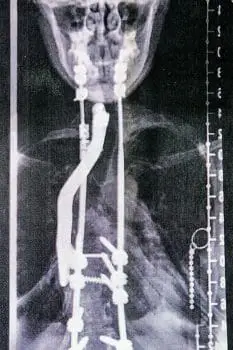Regulatory Aspects of 3D-Printed Surgical Implants
A very interesting article was recently published which highlights the regulatory aspects of custom made 3D-printed surgical implants.
Challenges in the design and regulatory approval of 3D-printed surgical implants: a two-case series
Background: Additive manufacturing or three-dimensional (3D) printing of metal implants can provide novel solutions for difficult-to-treat conditions, yet legislation concerning patient-specific implants complicates the implementation of these techniques in daily practice. In this Article, we share our acquired knowledge of the logistical and legal challenges associated with the use of patient-specific 3D-printed implants to treat spinal instabilities.
Methods: Two patients with semiurgent cases of spinal instability presented to our hospital in the Netherlands. In case 1, severe kyphotic deformity of the thoracic spine due to neurofibromatosis type 1 had led to incomplete paralysis, and a strong metallic strut extending from C6 to T11 was deemed necessary to provide long-term anterior support. In case 2, the patient presented with progressive paralysis caused by cervicothoracic dissociation due to vanishing bone disease. As the C5–T1 vertebral bodies had mostly vanished, an implant spanning the anterior spine from C4 to T2 was required. Because of the complex and challenging nature of both cases, conventional approaches were deemed inadequate; instead, patient-specific implants were designed with use of CT scans and computer-aided design software, and 3D printed in titanium with direct metal printing. For each implant, to ensure patient safety, a comprehensive technical file (describing the clinical substantiation, technical and design considerations, risk analysis, manufacturing process, and labelling) was produced in collaboration with a university department certified for the development and manufacturing of medical devices. Because the implants were categorised as custom-made or personalised devices under the EU Medical Device Regulation, the usual procedures for review and approval of medical devices by a notified body were not required. Finite-element analyses, compression strength tests, and cadaveric experiments were also done to ensure the devices were safe to use.
Findings: The planning, design, production, and insertion of the 3D-printed personalised implant took around 6 months in the first patient, but, given the experience from the first case, only took around 6 weeks in the second patient.

Read the full paper here.
A summary of the article was as also published in the Volkskrant, a Dutch Newspaper.



